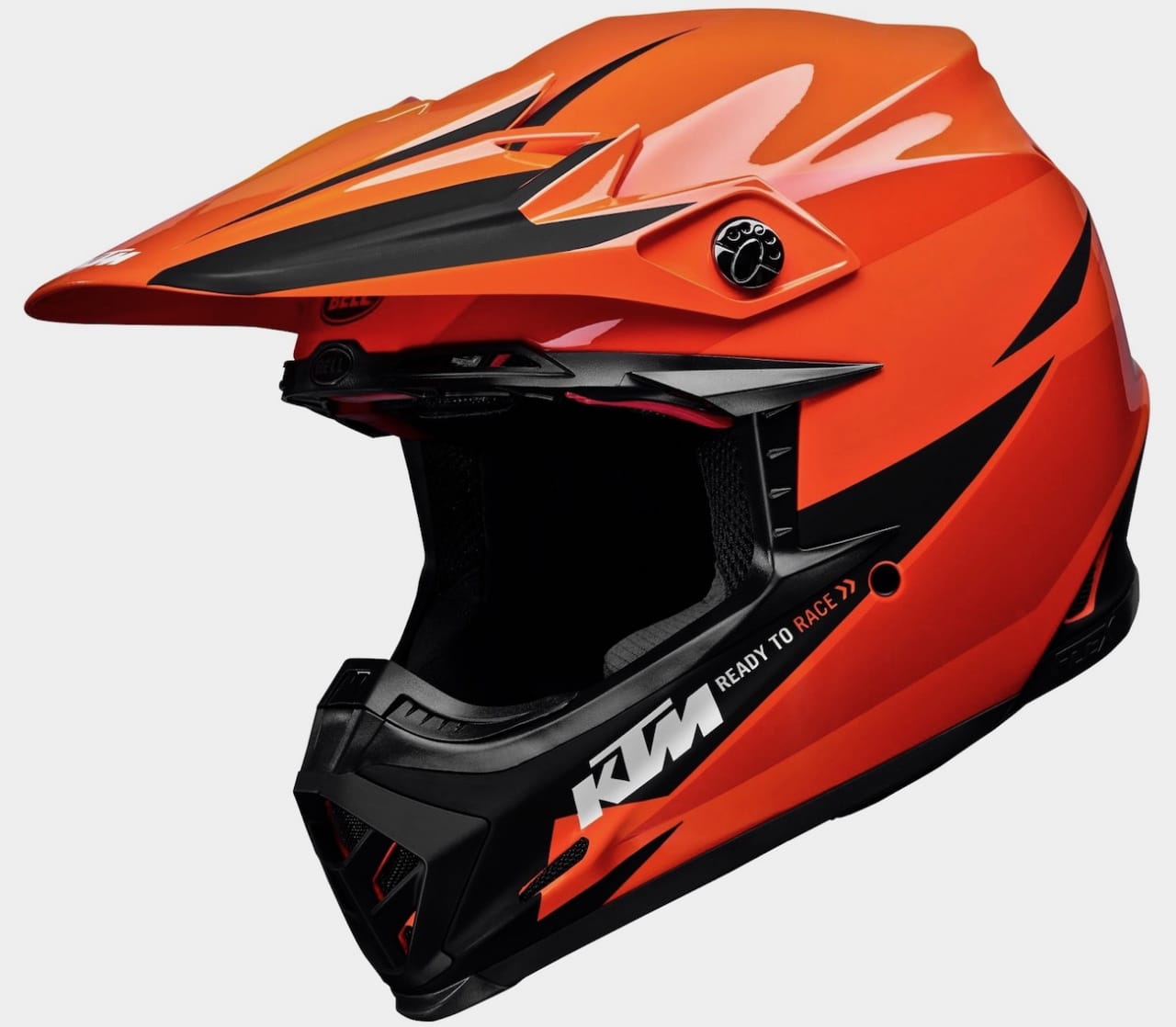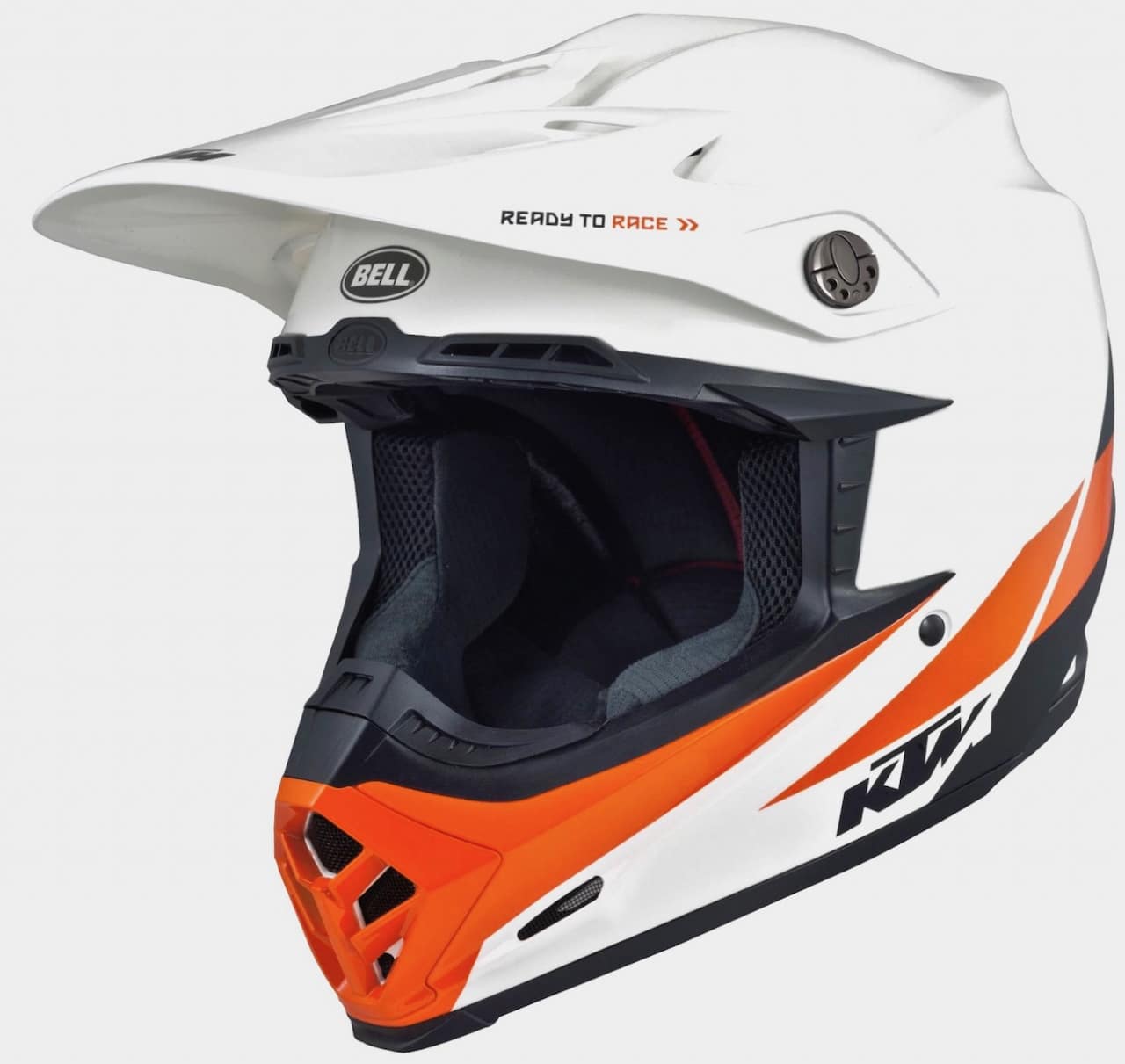MXA TEAM TESTED: KTM POWERWEAR BELL MOTO-9 FLEX HELMET
WHAT IS IT? When 6D alerted the consumer to the safety aspect of motocross helmets, Bell was the first competitor to respond with a new, creative and safe design. The Bell Moto-9 Flex is at the top of the Bell motocross helmet pyramid. Below the Moto-9 Flex are the $400 Bell Moto-9 MIPS, $290 Bell Moto-3 and $170 Bell MX 9 MIPS. For this test, MXA was interested in the KTM PowerWear Bell Moto-9 Flex in special KTM orange (or white with orange highlights). Bell offers this helmet on non-KTM branded versions.
WHAT’S IT COST? $679.95.
CONTACT? Your friendly local KTM dealer or mail-order houses.
WHAT STANDS OUT? Here’s a list of things that stand out with the KTM PowerWear Bell Moto-9 Flex helmet.
(1) Technology. The Bell Flex achieves its solid Snell 2015 test numbers by using three densities of foam in its shell. The liner closest to your head has EPO foam for low-speed impacts. The middle liner in Bell’s ice-cream-sandwich design has EPP foam for mid-speed impacts. The outer layer, closest to the carbon composite shell, has firmer EPS foam for high-speed impacts. The three layers’ different foam densities disperse impact energy depending on the intensity of the blow. Since the three foam layers are essentially free-floating, they can move independently of one another to help manage rotational movements. In the most basic terms, the inner liner of the Bell Moto-9 Flex is like a three-layer cake that has been sliced into pie-shaped segments. While the floating, three-layer, pie-shaped foam pieces are there for safety, they have the advantage of allowing the inner shape of the helmet to conform to the shape of your head, while also allowing air to flow through the liner.
(2) Kudos. We are glad that every helmet manufacturer is stepping up to the plate to make helmets safer, but Bell deserves credit for developing its own system. Bell could have taken the easier route of installing a MIPS (Multi-Directional Impact Protection System) with a lot fewer R&D dollars on the table. MIPS is a plastic, skull cap-style layer that fits below the foam to allow the helmet to slide relative to the head. Bell does offer MIPS-equipped helmets, and it should be noted that they are among the ownership group of the MIPS system; but, Bell wanted to make something special with the Moto-9 Flex—and they did.
(3) Safety. Virtually every helmet can pass the existing certification tests. The helmet industry needs a new certification process that keeps up with the new science of safety. Perhaps the FIM’s Helmet Certification Programme (FHCP) will help achieve that. Until then, look for Snell 2015 or ECE 22.05 numbers. DOT certification is legally required but is not a racing standard.
(4) Comfort. The KTM PowerWear Bell Moto-9 Flex has added features that we love: magnetic cheek pads, a flexible flying bridge visor, quick-flip visor screws, a washable X-Static liner, lightweight carbon composite shell, optional cheek pad thicknesses and excellent ventilation. Sizing of helmets is a personal matter. Most MXA test riders wear medium-size helmets, and the KTM PowerWear helmet fit fine; however, you should try before you buy.
MXA RATING: Helmets may be a matter of personal taste, but protecting your brain has little to do with fancy graphics. When choosing a helmet, focus on science first and fashion last. The Bell Moto-9 Flex is on the cutting edge of what science knows about brain protection.








Comments are closed.